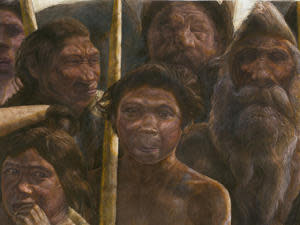 Science and Weather
Science and WeatherOldest human DNA sequenced reveals new mysteries in our family tree

Genetic analysis of bones found in a cave in Spain has revealed the oldest human DNA discovered to date, from roughly 400,000 years ago, and this find adds a mysterious new branch to the human family tree.
On humanity's evolutionary family tree, modern humans — or Homo sapien sapien — are at the top, occupying the tip of a winding branch that has had several offshoots over the millennia. However, we are only one of several boughs on the tree. Evidence has shown that the Neanderthals of Europe and west Asia and the Denisova of southern Siberia — both of whom were around at roughly the same time as each other, and at the same time as ancestors of modern humans — occupy two other branches. It has also shown that all three of our species branched off from a common ancestor known as Homo heidelbergensis.
[ Related: Ancient human DNA links First Americans to Europe and Western Asia ]
Up until now it was thought that Neanderthals and Denisovans were completely separate from one another after they branched off from Homo heidelbergensis, living far away from each other and having no direct genetic ties. Fossil bones unearthed in 'Sima de los Huesos' — the 'Pit of Bones' — in northern Spain, tell a different story, though. Scientists recovered mitochondrial DNA (mtDNA) from the skeletons, which is passed down directly from mother to child without any alteration, making it an excellent way to trace someone's ancestry. Sequencing this DNA showed that while the Sima hominins had features like Neanderthal, genetically, they were actually more closely related to the Denisovans.
The fact that they show a mitochondrial genome sequence similar to that of Denisovans is irritating," said study lead Matthias Meyer, from the Max Planck Institute for Evolutionary Anthropology, according to National Geographic. "Our results suggest that the evolutionary history of Neanderthals and Denisovans may be very complicated and possibly involved mixing between different archaic human groups."
[ More Geekquinox: NASA wants to grow vegetables, herbs and flowers on the moon in 2015 ]
According to what the researchers wrote in Nature, the Sima hominins could be an ancestor of the Denisovans, but that doesn't explain how they can live near Neanderthal while being genetically distinct from them. They could be ancestors of both Neanderthal and Denisovans, but that doesn't account for both of those species having completely different mitochondrial DNA. They could be distinct from both, and somehow contributed mtDNA to the Denisovans, but then they likely wouldn't look so much like Neanderthals. It's possible that some other species played a roll, maybe through interspecies breeding.
The next step for Meyer and his colleagues is to sequence the entire genome of the Sima hominins, which will hopefully give them the clues they need to wrap up this mystery.
(Image courtesy: Kennis & Kennis, Madrid Scientific Films)
Geek out with the latest in science and weather.
Follow @ygeekquinox on Twitter!


